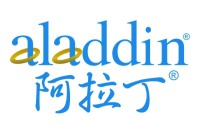A conventional method used for DNA size measurement is gel electrophoresis. In this process, an electric field is applied to a gel medium and DNA molecules are separated by size. However, this process is slow and takes hours to separate different sizes of DNA fragments. Other physical and chemical properties of gel, such as viscosity, temperature, and temperature gradients, tend to influence the migration of DNA fragments. Alternatively, mass spectrometry has been used for several decades to measure the molecular weight of gaseous samples by mass-to-charge ratio (M/Z). In order to use a mass spectrometer for molecular weight determination, molecules of interest need to be produced in a gas phase. Owing to the practically zero vapor pressure of biomolecules at room temperature, a method to convert biomolecules from solid or liquid form into gaseous form is required. Desorption of biomolecules from solid phase using a laser beam has been pursued for decades. However, large biomolecules tend to fragment when laser desorbed, due to their strong absorption of laser photons. Results of laser desorption experiments indicated that the upper mass limit was ∼5000 Daltons. Matrix-assisted laser desorption/ionization (MALDI) was developed to circumvent the problem of laser absorption-induced dissociation (1 ). With MALDI, laser energy is absorbed by matrix molecules instead of the biomolecule so that no fragmentation of the biomolecule occurs. Because mass spectrometry is based on the detection of gas phase ions, a means to produce ions is also needed. In the MALDI process, positive or negative biomolecular ions are produced by attaching or detaching a proton to/from a biomolecule.






